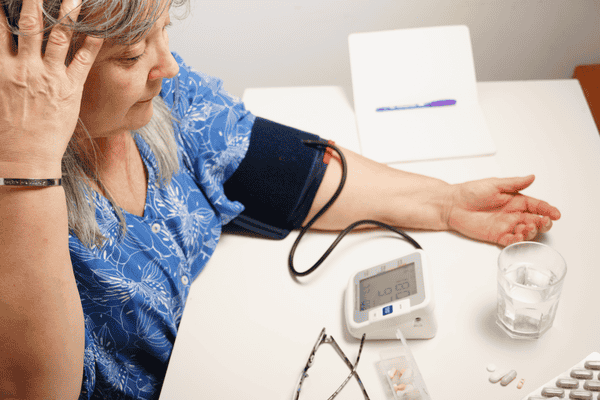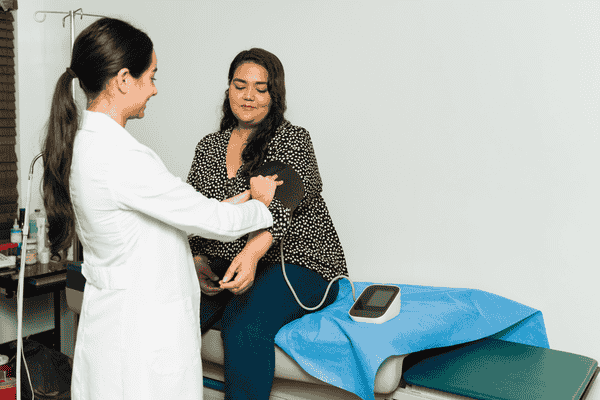Have you ever wondered what sneaky threats might be lurking around the corner when it comes to heart health as we age, especially for older women? Imagine this scenario: you’re enjoying life to the fullest, but beneath the surface, certain heart disease risk factors could be quietly putting your heart in jeopardy. Let’s shine a light on these hidden dangers together to help you safeguard your heart as you journey through the golden years.
A Journey Through Time
Picture Eleanor, a sprightly 68-year-old woman with a zest for life. She’s always been the heart and soul of family gatherings, her laughter echoing through the room. But recently, she’s been feeling a little more tired than usual. She brushes it off, attributing it to her age. However, Eleanor is unaware that certain risk factors could be quietly endangering her heart health. Let’s walk through Eleanor’s story and uncover the hidden dangers that many elderly women face when it comes to heart disease.
Unearthing the Root Causes
In this blog, we delve into the top causes and risk factors of heart disease specifically affecting elderly women. From high blood pressure to family history, each factor plays a crucial role in determining heart health.
Age as a Risk Factor
As women age, the risk of developing heart disease increases significantly. Eleanor remembers her mother mentioning heart troubles as she aged, but never paid much attention to it. Aging brings about various physiological changes in the cardiovascular system. The heart muscle becomes less efficient at pumping blood, and blood vessels may lose some of their elasticity. These changes can lead to an increased workload on the heart and higher blood pressure. Arteries may become hardened and narrowed due to the accumulation of fatty deposits, a condition known as atherosclerosis.
Hormonal Changes
Eleanor also recalls the hot flashes and mood swings that came with menopause. Little did she know, these hormonal changes also affected her heart. Estrogen, a hormone that offers some cardiovascular protection, declines during menopause. This decline may lead to unfavorable changes in lipid profiles, including an increase in LDL cholesterol (the “bad” cholesterol) and a decrease in HDL cholesterol (the “good” cholesterol). These lipid changes can further contribute to the development of atherosclerosis.
Fortifying Your Defenses
Armed with knowledge about these risk factors, you’ll discover proactive strategies for preventing heart disease, managing existing conditions, and reducing potential threats to your heart health.
High Blood Pressure
High blood pressure, or hypertension, is a significant risk factor for heart disease among elderly women. Eleanor’s doctor mentioned her blood pressure readings were slightly elevated during her last visit. Elevated blood pressure puts excessive strain on the heart and blood vessels, leading to the development of various cardiovascular conditions.
Regular monitoring of blood pressure is crucial. Health professionals recommend routine blood pressure checks, ideally at least once a year, especially for elderly women. Managing high blood pressure involves lifestyle modifications such as adopting a heart-healthy diet, reducing sodium intake, exercising regularly, and maintaining a healthy weight. Eleanor decides to cut back on her favorite salty snacks and starts taking evening walks with her neighbor.
High Cholesterol
High cholesterol levels are another silent threat. Eleanor remembers the doctor mentioning her cholesterol levels, but she didn’t pay much attention at the time. Cholesterol is a waxy, fat-like substance found in the blood. While our bodies need some cholesterol for essential functions, too much of it can lead to plaque buildup in the arteries.
Understanding cholesterol levels is key. LDL cholesterol is often called “bad” cholesterol because it can build up in the arteries. On the other hand, HDL cholesterol is known as “good” cholesterol because it helps remove excess cholesterol from the bloodstream.
Eleanor decides to adopt a healthier diet, rich in fruits, vegetables, whole grains, and lean proteins. She also incorporates foods rich in omega-3 fatty acids, like fatty fish and nuts, into her diet. Regular physical activity becomes part of her routine, helping to raise HDL cholesterol levels and improve her overall cardiovascular health.
Family History
Family history plays a significant role in determining the risk of heart disease. Eleanor starts to think more about her family’s medical history. Having a family history of heart disease can increase the likelihood of developing the condition. This is because certain genetic factors and shared environmental influences can contribute to heart-related problems.
Being aware of family medical history allows for proactive steps. Eleanor discusses her family history with her healthcare provider, who assesses her individual risk factors and recommends appropriate preventive measures. She’s advised to adopt a heart-healthy diet, engage in regular physical activity, and manage other risk factors such as high blood pressure and high cholesterol.
Empowering Insights
By understanding the intricate link between age and heart disease in women, you’ll gain valuable insights into navigating this vital aspect of your overall well-being. Dive in to explore how to protect your heart and cherish a healthier life ahead.
Diabetes and Heart Disease
Eleanor’s best friend, Mary, was recently diagnosed with diabetes. This news makes Eleanor more vigilant about her health. Diabetes is a significant risk factor for heart disease in elderly women. Elevated blood sugar levels, insulin resistance, and abnormal lipid profiles are all factors that contribute to the increased risk of cardiovascular conditions.
Tight control of blood sugar levels is paramount. Consistently high blood sugar levels can contribute to the accumulation of plaque in the arteries, leading to atherosclerosis. Eleanor decides to monitor her blood sugar levels regularly, follow a diabetes management plan, and take prescribed medications as directed. She also makes lifestyle modifications, such as adopting a balanced diet and engaging in regular physical activity.
Obesity and Sedentary Lifestyle
Eleanor realizes that her weight has been gradually increasing over the years. Carrying excess weight puts additional strain on the heart, leading to higher blood pressure, increased cholesterol levels, and a greater risk of developing diabetes. Leading a sedentary lifestyle can independently contribute to heart disease risk.
To reduce the risk associated with obesity and a sedentary lifestyle, Eleanor adopts a heart-healthy diet and engages in regular physical activity. She starts with small changes, like taking the stairs instead of the elevator and going for brisk walks in the morning. She also sets achievable weight loss goals and consults a healthcare professional for personalized advice.
Smoking and Tobacco Use
Eleanor’s father was a smoker, and she vividly remembers the warnings about its dangers. Smoking and tobacco use pose significant threats to heart health. The chemicals in tobacco smoke cause blood vessels to constrict and heart rate to increase, leading to high blood pressure and reduced oxygen supply.
Breaking free from nicotine addiction is crucial for improving heart health. Eleanor encourages her friends who smoke to seek professional support, consider nicotine replacement therapy, and engage in counseling and behavioral therapy. Creating a supportive environment and staying active can help distract from cravings and reduce stress levels.
Hormonal Changes
During menopause, hormonal changes can have a significant impact on heart health. Eleanor’s doctor explains that as estrogen levels decline, women become more prone to developing heart disease. Estrogen has a protective effect on the cardiovascular system, promoting healthy blood flow and blood vessel function.
To minimize the impact of hormonal changes, Eleanor considers hormone therapy under the guidance of her healthcare provider. She also makes lifestyle modifications, such as adopting a heart-healthy diet and engaging in regular physical activity. These changes help manage cholesterol levels, blood pressure, and overall heart health.
Conclusion
As Eleanor continues her journey through the golden years, she becomes more aware of the hidden dangers that could be lurking around the corner when it comes to heart health. By understanding the causes and risk factors of heart disease, she takes proactive steps to safeguard her heart. Regular check-ups, a heart-healthy diet, regular physical activity, and quitting smoking become part of her routine.
Eleanor’s story is a reminder that it’s never too late to prioritize heart health. By recognizing these hidden dangers and making positive lifestyle changes, older women can take control of their heart health and reduce the likelihood of developing heart-related complications. Let’s shine a light on these hidden dangers together and cherish a healthier life ahead.













